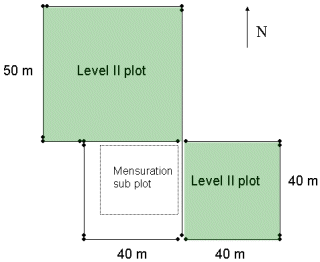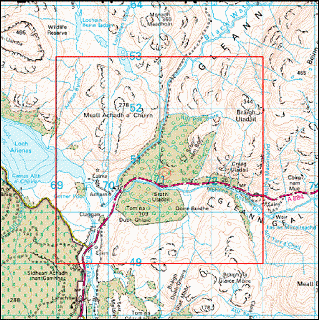Research
Research Status:completed
We use some essential cookies to make this website work.
We’d like to set additional cookies to understand how you use forestresearch.gov.uk, remember your settings and improve our services.
We also use cookies set by other sites to help us deliver content from their services.
A summary of the variables monitored at this site can be found here.


| Date of installation | 12/09/2002 |
|---|---|
| Planting year | 1880 |
| Main tree species | Oak |
| Other tree species present in plot | Sessile and Pedunculate Oak (Quercus petraea (75 %) and Quercus robur (25 %) |
| Forest type | Plantation |
| Sylvicultural system | Stored oak coppice |
| Tree density | 530 trees/ha |
| Biomass/volume | 249 m3/ha (2004) |
| Basal area | 36 m2/ha (2004) |
| Local Yield Class | 2 |
| Plot dimensions | 0.39 ha |
| Altitude | 70 – 76 m a.s.l |
| Mean slope | 8 – 28% |
| Geology | Acid igneous |
| Topography | Site tends to vary from flat to gentle slope with rocky outcrops |
| Aspect | South, South West |
| Rainfall | 2200 mm |
| Provisional soil type (FAO 1988) |



The management history of the Ardtornish plot can only be described in as far as what is known in general terms about the Atlantic oakwoods of western Scotland. Traditionally, the upland native woodlands of this region were used to shelter low numbers of livestock (usually cattle) and today there are frequently high numbers of sheep and cattle as well as deer.
Upland Atlantic oakwoods were also known to have been used intensively in the past for the production of charcoal, tanbark and timber with a peak in activity occurring around 1800AD, followed by a decline in management and eventual neglect. Many stands were planted and coppiced only once or twice, leaving poorly developed root systems and small crowned coppice stems. Some stands were subsequently stored to promote high forest whilst others have been left to naturally self-single.
Age ranges are now highly artificial (generally between 110 and 150 years) and stand structure is typically very uniform (see Peterken & Worrell, 2001). At the Ardtornish plot there is clear evidence of coppicing on old planted oak of 100-150 years.
Peterken, G.F. and Worrell, R. (2001). Conservation management of the Sunart Oakwoods SAC and the potential for supporting rural development. Report for Caledonian Partnership for the Life ’97 project.
Cookies are files saved on your phone, tablet or computer when you visit a website.
We use cookies to store information about how you use the dwi.gov.uk website, such as the pages you visit.
Find out more about cookies on forestresearch.gov.uk
We use 3 types of cookie. You can choose which cookies you're happy for us to use.
These essential cookies do things like remember your progress through a form. They always need to be on.
We use Google Analytics to measure how you use the website so we can improve it based on user needs. Google Analytics sets cookies that store anonymised information about: how you got to the site the pages you visit on forestresearch.gov.uk and how long you spend on each page what you click on while you're visiting the site
Some forestresearch.gov.uk pages may contain content from other sites, like YouTube or Flickr, which may set their own cookies. These sites are sometimes called ‘third party’ services. This tells us how many people are seeing the content and whether it’s useful.